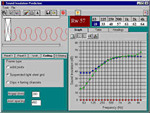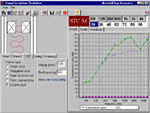|
Acoustics Design with INSUL Program |
Acoustics
and Air Testing Laboratory has INSUL computer program for predicting the
airborne sound insulation performance of walls, floors and glazing. INSUL
is based on classical theoretical models that onle require easily obtainable
construction information. The programme can make good estimates of the
Transmission Loss (TL) in 1/3 octave bands and Weighted Sound Reduction
Index (STC or Rw) for use in noise transfer calculations.
INSUL can predict the sound insulation performance of walls, floors ceilings and windows. Moreover, the INSUL can also accurately estimate of Sound Transmission Class (STC) and Weighted Sound Reduction Index (Rw) of building products.
 |
INSUL can be used to quickly evaluate new materials and systems, or to investigate the effects of changes to existing designs. It models materials using well known elastic plate theory including allowances for thick panel effects as published by Ljunggren, Rindell and others. More complex partitions are modelled using work by Sharp, Cremer and others. It can predict the effect of installing an acoustic blanket in the stud cavity. It has evolved over several versions into a very easy to use tool that takes advantage of the Windows environment, and has been refined by continued comparison with laboratory tests to provide acceptable accuracy for a wide range of constructions. |
Test data can be entered to permit easy comparison
with predictions and constructions can be saved for later recall. INSUL
takes account of finite size effects which are very important when predicting
small samples such as windows and also for normal elements at low frequencies.
Like any prediction tool INSUL is not a substitute for
measurement. However, comparisons with test data indicate that INSUL reliably
predicts STC values to within 3dB for most constructions.


INSUL will greatly enhance the ability of acoustic consultants and product manufacturers to quickly and confidently specify constructions in order to achieve a desired airborne sound insulation.